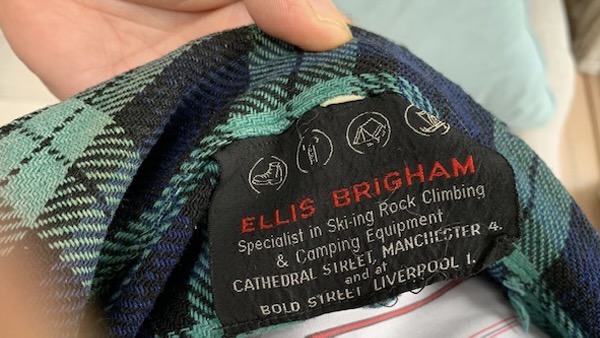How to wash – and care for – your merino wool gear
Your merino wool gear doesn’t come cheap, so follow our guide to washing it without shrinking or damaging it

So you’ve just upgraded your outdoor kit with a soft base layer, cozy thermal leggings and multiple pairs of snuggly hiking socks, all made from magical merino wool. You’re ready to head out into the wild and have your sweat wicked, your temperature regulated and enjoy all of these benefits without having to wash your gear after every use.
“What makes them easy to maintain is that wool products rarely require washing at all. Wool is naturally antimicrobial, meaning it resists the growth of bacteria that cause odors. Even after extended wear during a multi-day adventure, wool garments will still feel fresh,” explains Lorna Preston from UK-based outdoors outfit Trekitt, which deals in a lot of wool gear.
It’s true that you can go a long time without washing your merino wool gear (I wash my Darn Tough Hiker Boot Midweight socks every few months at most) and compared to your synthetic gear, which probably needs to be washed every use, this is a huge bonus. It means less effort and energy savings on your part, and means that your precious wool gear lasts longer.
However, a time will come when you can no longer ignore that stench coming from the armpits of your well-worn running top and it’s time to give it a wash. But can you really chuck it in the machine without it shrinking to toddler size and developing holes? Or do you need to hand wash it, or worse, fork out at the dry cleaners? In short, the answer to both questions is no. Read on for all the details on how to wash – and care for – your merino wool gear.

When to wash your merino wool gear
First off, unless you’ve had an extremely rugged adventure that entailed commando crawling through mud, you’re probably not going to need to wash your merino wool gear every time you wear it, especially if it doesn’t sit directly next to your skin.
Merino wool clothes that get sweaty, such as your base layer on a trail run or your thermal underwear if you’re backcountry skiing, might start to get a bit stinky after a couple of wears, but before you wash them, or any outer garments made with wool, try just hanging them up for a day or two.
“We recommend just airing them out rather than washing. This will help keep them in optimum condition for longer,” says Preston.
All the latest inspiration, tips and guides to help you plan your next Advnture!
If the smell is still inescapable after an airing out, your socks are covered in mud or you got camping spaghetti all down your front during your last backpacking trip, it probably is time to apply some cleaning products.

How to wash your merino wool gear
Preston tells us that although wool garments do require a little more care to avoid damaging or shrinking them, wool is actually surprisingly tough. In fact, wool fibers can be bent back and forth 20,000 times before breaking, compared to cotton's 3,000 times.
However, that doesn’t mean you should just give your wool clothing a hot wash and throw it in the dryer along with the rest of your clothing as doing so is a recipe for shrunken or misshapen gear. Instead, use the following steps every time to ensure your merino wool gear has a long and happy life in the hills.
1. Check the label
Reading instructions might sound a little last century, but it’s important to do because not all wool garments are the same. Just as an example, I checked the label of my EDZ base layer, which is 100 percent merino and calls for a 30 degree wash. Then I had a look at my Helly Hansen LIFA base layer which is a blend of merino and polypropylene and it turns out it can handle a 40 degree wash.
So you can’t just bung all your wool garments together; sort them into groups and wash according to the instructions on the label.

2. Turn your garments inside out
While you’re inspecting the labels of your garments, you may notice that they also instruct you to wash your wool clothes inside out. This means that the inner layer of your clothes takes the stress of the washing, and any color fading happens there first, and the side you show to the world stays in better condition for longer.
3. Wash your clothes
Though your garments might specify hand washing, most gear built for the outdoors can be washed in your machine on a gentle, wool or hand wash cycle. Use that cycle but don’t just use your regular detergent. Use a wool detergent and skip the fabric softener.

4. Air dry
The tumble dryer might mean your clothes are ready to be folded – or worn again – sooner, but when it comes to wool, it isn’t worth the savings in time. Wool has a reputation for shrinking, and while modern wool products are designed to minimize this risk, Preston explains that the potential for shrinkage largely depends on the quality of the wool and the care instructions followed.
“Avoiding excessive heat can help preserve the size and shape of wool garments. Our top tip is to avoid washing them as much as you can and if you do have to, opt for lower temperatures and avoid fast spin cycles.”
The best way to keep your wool gear in good shape, literally, is to hang it up on the line to air dry. Then when you’re ready to wear it, it will pull on like an old friend and keep you comfortable come rain or shine on the trail.
Julia Clarke is a staff writer for Advnture.com and the author of the book Restorative Yoga for Beginners. She loves to explore mountains on foot, bike, skis and belay and then recover on the the yoga mat. Julia graduated with a degree in journalism in 2004 and spent eight years working as a radio presenter in Kansas City, Vermont, Boston and New York City before discovering the joys of the Rocky Mountains. She then detoured west to Colorado and enjoyed 11 years teaching yoga in Vail before returning to her hometown of Glasgow, Scotland in 2020 to focus on family and writing.

